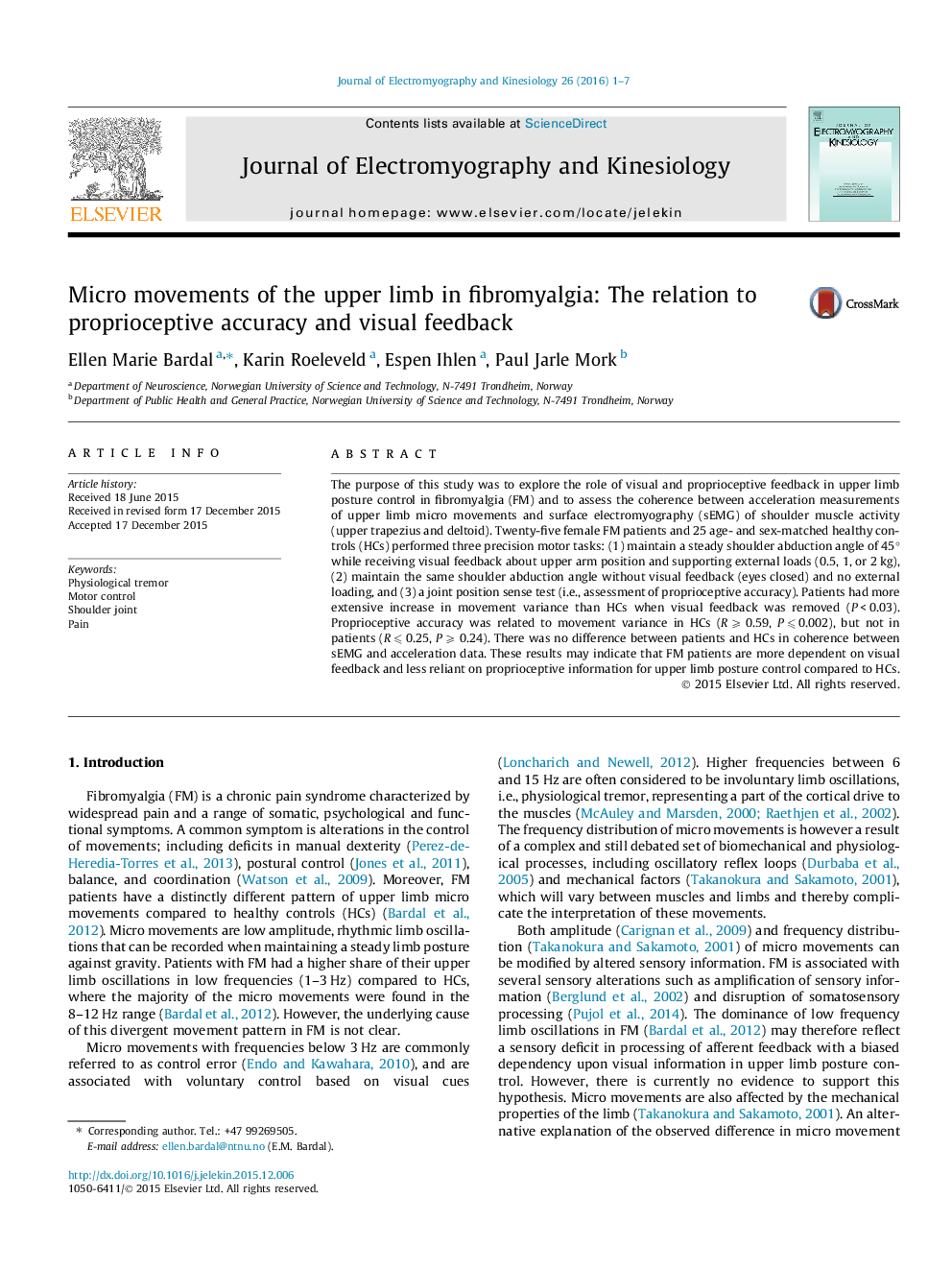| Article ID | Journal | Published Year | Pages | File Type |
|---|---|---|---|---|
| 4064439 | Journal of Electromyography and Kinesiology | 2016 | 7 Pages |
The purpose of this study was to explore the role of visual and proprioceptive feedback in upper limb posture control in fibromyalgia (FM) and to assess the coherence between acceleration measurements of upper limb micro movements and surface electromyography (sEMG) of shoulder muscle activity (upper trapezius and deltoid). Twenty-five female FM patients and 25 age- and sex-matched healthy controls (HCs) performed three precision motor tasks: (1) maintain a steady shoulder abduction angle of 45° while receiving visual feedback about upper arm position and supporting external loads (0.5, 1, or 2 kg), (2) maintain the same shoulder abduction angle without visual feedback (eyes closed) and no external loading, and (3) a joint position sense test (i.e., assessment of proprioceptive accuracy). Patients had more extensive increase in movement variance than HCs when visual feedback was removed (P < 0.03). Proprioceptive accuracy was related to movement variance in HCs (R ⩾ 0.59, P ⩽ 0.002), but not in patients (R ⩽ 0.25, P ⩾ 0.24). There was no difference between patients and HCs in coherence between sEMG and acceleration data. These results may indicate that FM patients are more dependent on visual feedback and less reliant on proprioceptive information for upper limb posture control compared to HCs.
